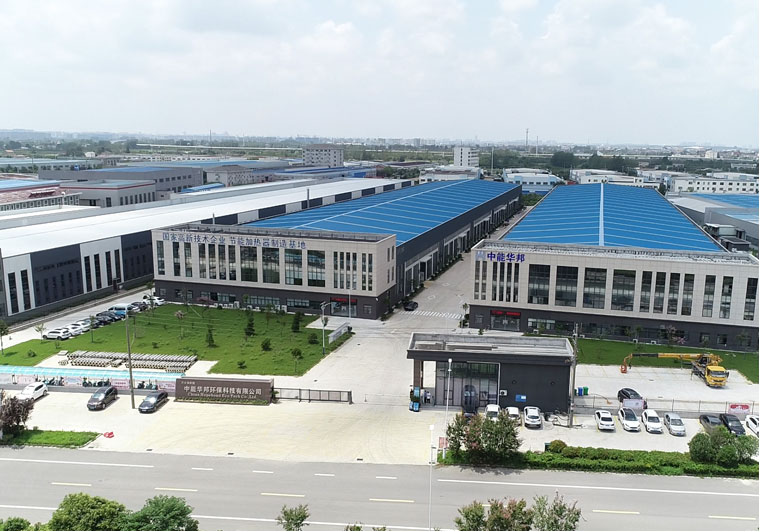Heating Equipment
A temperature transmitter works in three main ways. First, sensors measure temperature: thermal resistors use the change in material resistance with temperature (like platinum resistors), and thermocouples rely on the Seebeck effect, generating a voltage due to temperature differences. Second, signal conversion occurs. Weak analog signals are amplified and linearized, while digital ones are converted by an ADC for better processing and anti - interference. Finally, for signal transmission, the two - wire system uses two wires for power and a 4 - 20mA current signal; the four - wire system has two for power and two for voltage or digital signals, being more resistant to interference; and there's also wireless transmission via Bluetooth and other techs.
Where Are Temperature Transmitters Used?
1. Industrial Production: In the petrochemical industry, they monitor the reaction temperature; in the power industry, they monitor the temperature of equipment; in the metallurgical industry, they control the processing temperature, ensuring the normal operation of each process and the quality of products.
2. Building and HVAC (Heating, Ventilation, and Air Conditioning): In intelligent buildings, air conditioners are regulated according to the indoor temperature. In the HVAC system, the temperature of heat sources and cold sources is monitored to improve comfort and operational effectiveness.
3. Food and Medicine: In food processing, the temperature of each link is controlled to ensure quality. In the medicine industry, the temperature is controlled throughout the whole process to meet the standards and ensure the quality of drugs.
4.Environmental Monitoring: In meteorological observations, various temperatures are measured to assist in weather forecasting. In industrial environmental monitoring, the impact of production on the surrounding temperature is monitored.
The usage steps of a temperature transmitter are as follows:
Before installation: Select a suitable temperature transmitter, check the equipment, and get familiar with the instruction manual.
Installation and connection: Select an appropriate location for installation and fixation, and connect the power supply and the signal receiving device.
Parameter setting and calibration: Set parameters such as the measuring range, and calibrate it with a standard thermometer.
Operation and maintenance: Observe the operation status and conduct regular inspections.
Advantages of Temperature Transmitters
1. High precision: Accurate measurement with extremely small errors, meeting the strict temperature control requirements.
2. Strong stability: Advanced design, resistant to environmental interference, and can work stably under harsh conditions.
3. Long transmission distance: Convert to standard signals, which can be transmitted hundreds of meters with strong anti-interference ability.
4. Wide adaptability: There are various types, capable of measuring from extremely low temperatures to high temperatures, and the installation can be customized as needed.
5. Rich intelligence: It has functions such as automatic calibration, fault diagnosis, data storage, and remote communication, which is convenient for monitoring and operation.
6. Easy maintenance: Simple structure, high integration, few faults, low cost, and only regular cleaning and calibration are required.
Product Parameter
Product Parameters
| Input | |
| Input signal | Resistance temperature detector (RTD), thermocouple (TC) |
| Cold-junction compensation temperature scope | -20~60℃ |
| Compensation precision | ±1℃ |
| Output | |
| Output signal | 4...20mA(two-wire) |
| Load resistance | RL≤(Ue-12)/0.021 |
| Output current of upper and lower limit overflow alarm | IL=3.8mA、IH=21mA |
| Power supply | |
| Supply voltage | 12...40VDC |
| Other parameters | |
| Temperature drift | ≤0.02%FS/℃ |
| Response time | Reach to 90% of the final value for 1s |
| Used environmental temperature | -40~80℃ |
| Storage temperature | -40~100℃ |
| Installation area | Top cassette installation |
Input type and transmission precision
| Type | Measuring range | Minimum measurement range | Conversion accuracy |
| Pt100 | -200~850℃ | 20℃ | ±0.1% range or ±0.2℃ |
| Cu50 | -50~150℃ | 20℃ | ±0.1% range or ±0.2℃ |
| B | 400~1800℃ | 500℃ | ±0.1% range or ±1.5℃ |
| E | -100~1000℃ | 50℃ | ±0.1% range or ±0.5℃ |
| J | -100~1200℃ | 50℃ | ±0.1% range or ±0.5℃ |
| K | -180~1372℃ | 50℃ | ±0.1% range or ±0.5℃ |
| N | -180~1300℃ | 50℃ | ±0.1% range or ±0.5℃ |
| R | -50~1768℃ | 500℃ | ±0.1% range or ±1.5℃ |
| S | -50~1768℃ | 500℃ | ±0.1% range or ±1.5℃ |
| T | -200~400℃ | 50℃ | ±0.1% range or ±0.5℃ |
Shipment
provides customers with quality and safe transportation.

Sensing the Temperature: The thermostat in an immersion heater utilizes advanced temperature sensors such as thermistors or bi-metallic strips to constantly mon...
READ MORESinton, a global manufacturer of industrial heating systems, has officially released a new technical white paper titled “Fundamentals of Organic Heat Carrier Bo...
READ MOREOil Quality Management The foundation of contaminant control in an oil circulation heater lies in maintaining high-quality circulating oil. The performance and ...
READ MOREIn the context of the global energy and chemical industry's continuous transformation towards safety, efficiency and intelligence, China's high-end industrial e...
READ MOREOrganized fire safety drills To enhance safety awareness within the industrial park and in response to the "119" Fire Safety Awareness Month, on November 29th,...
READ MORE